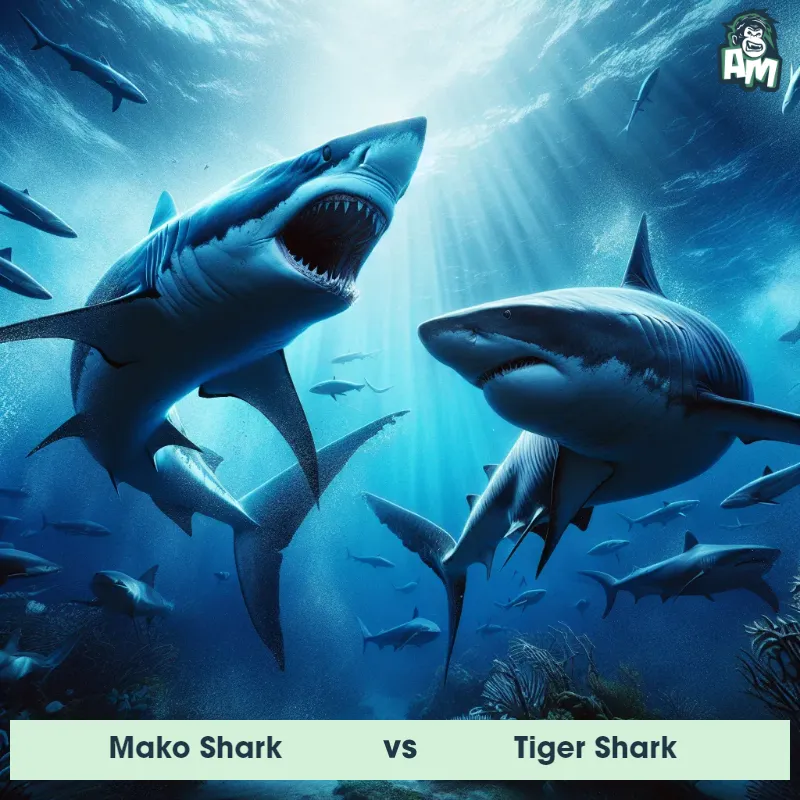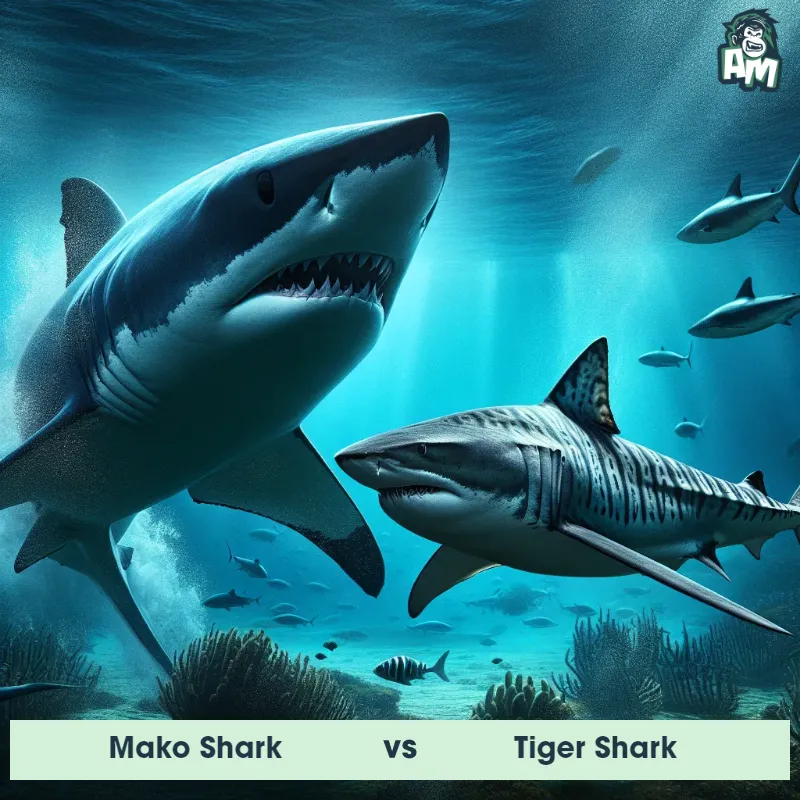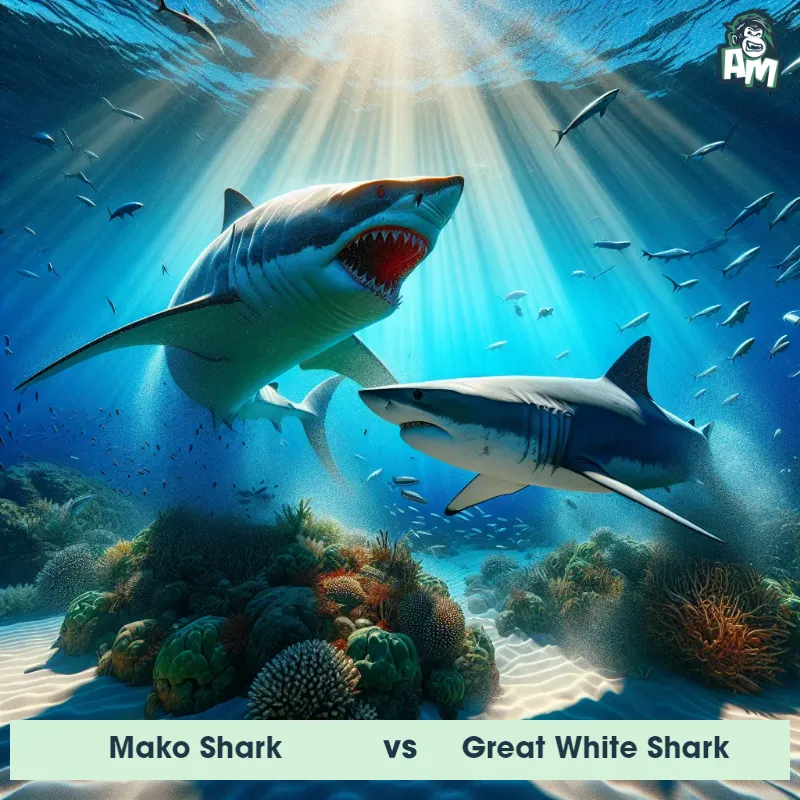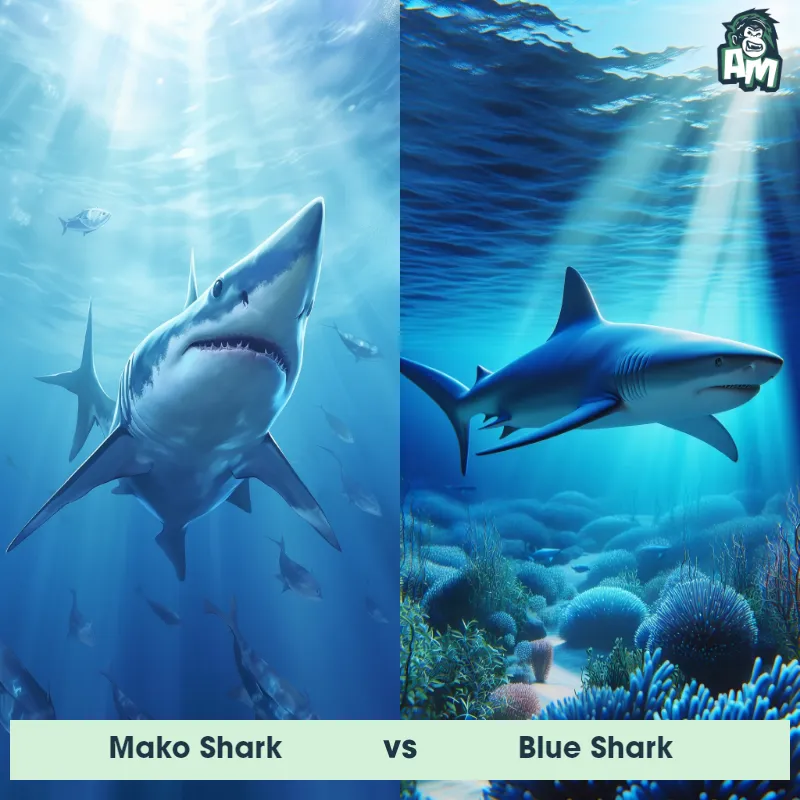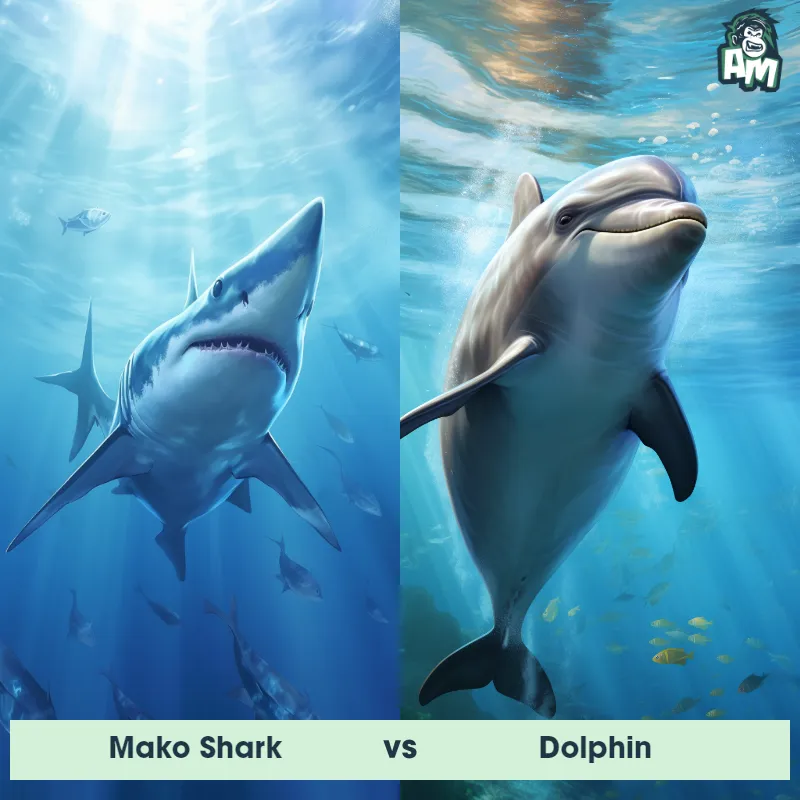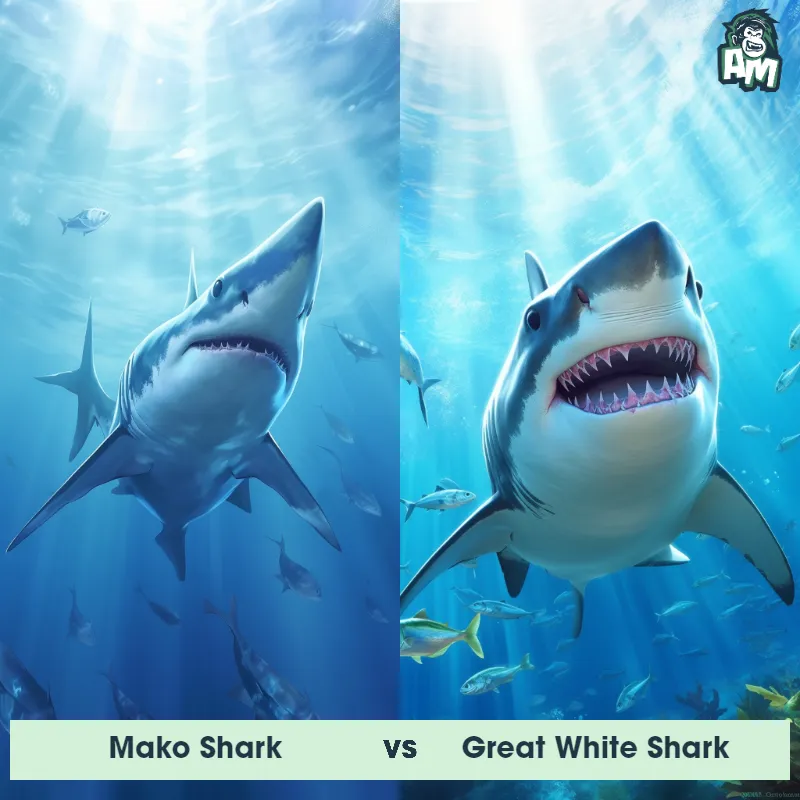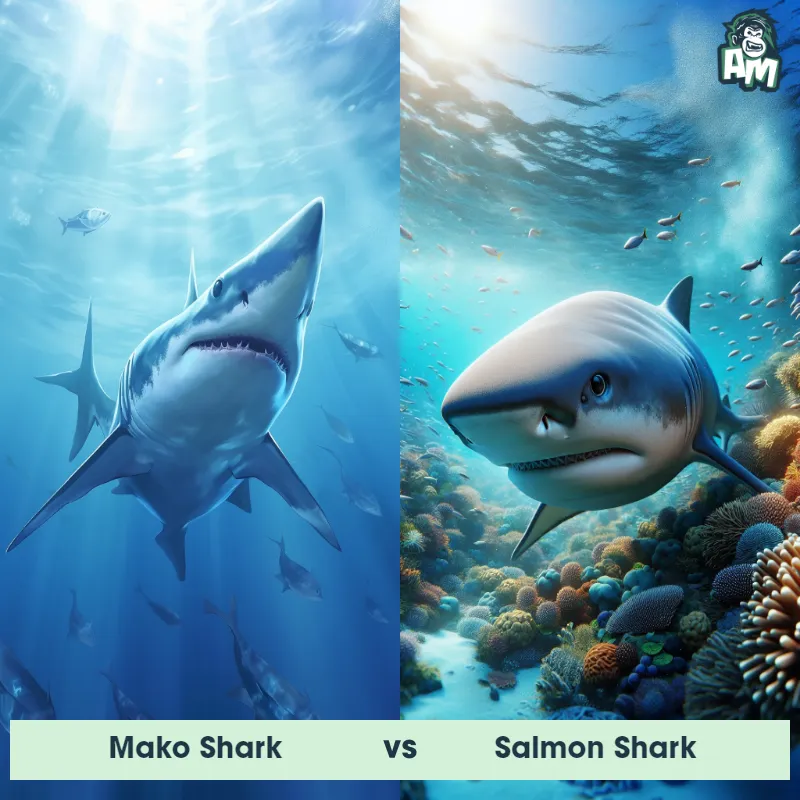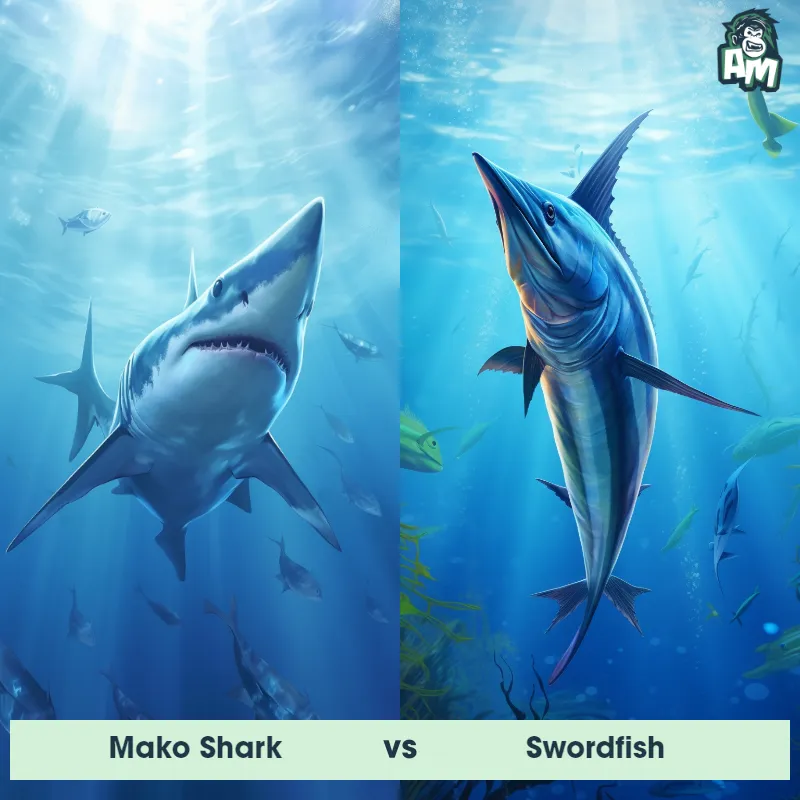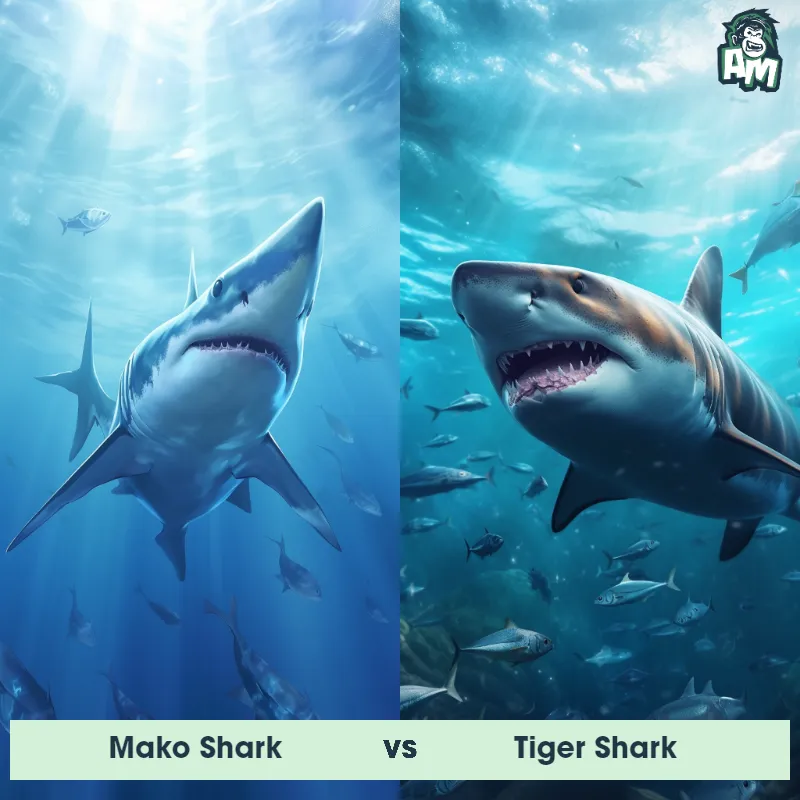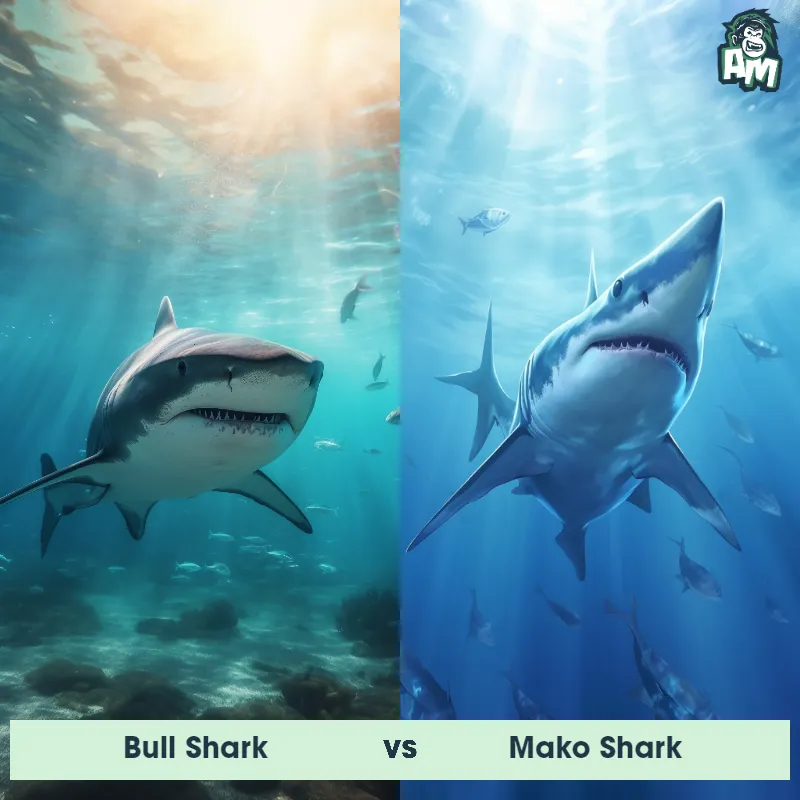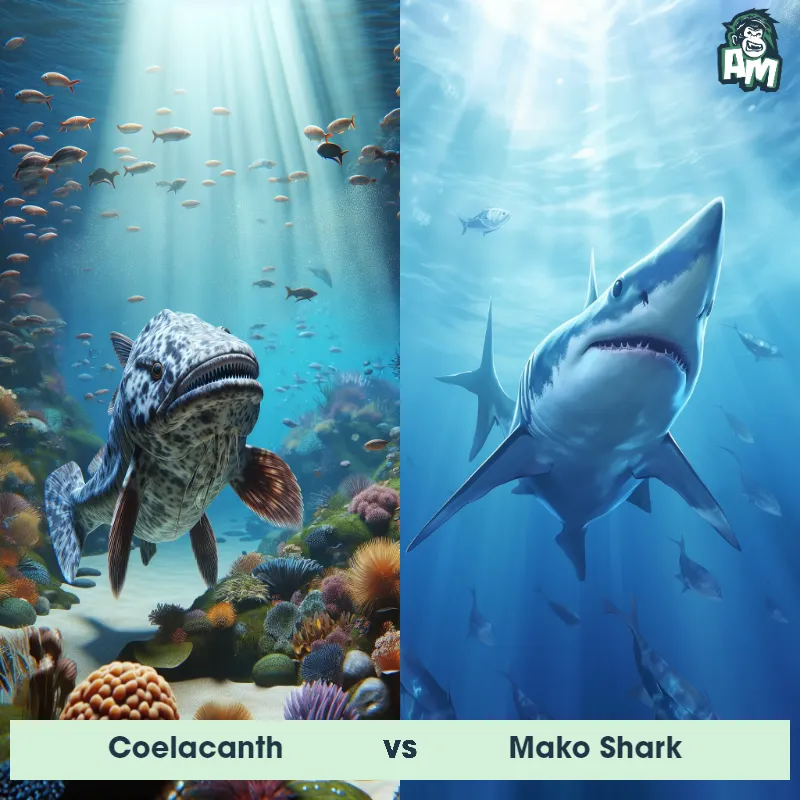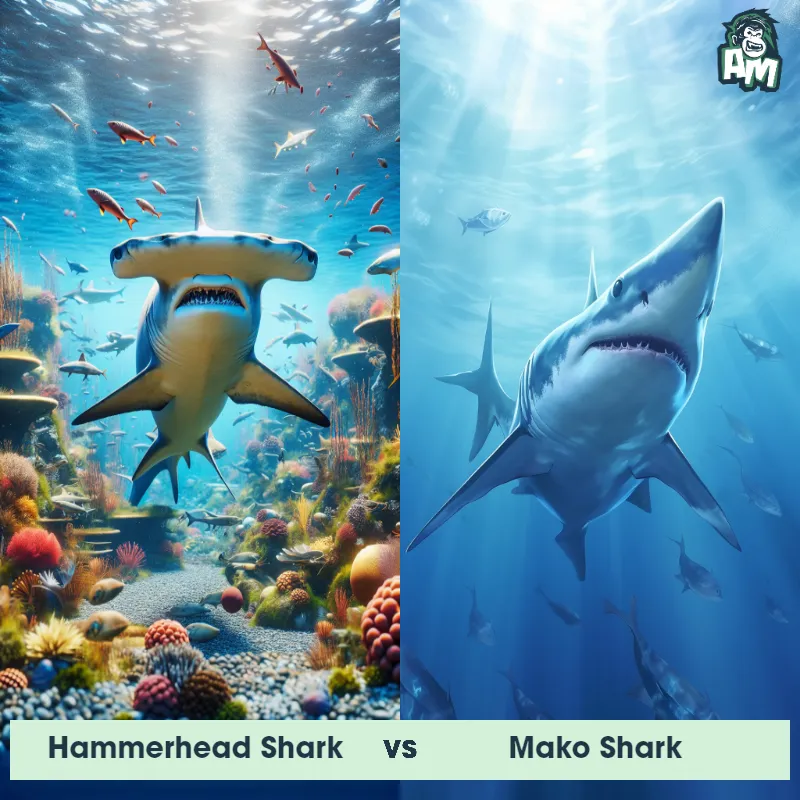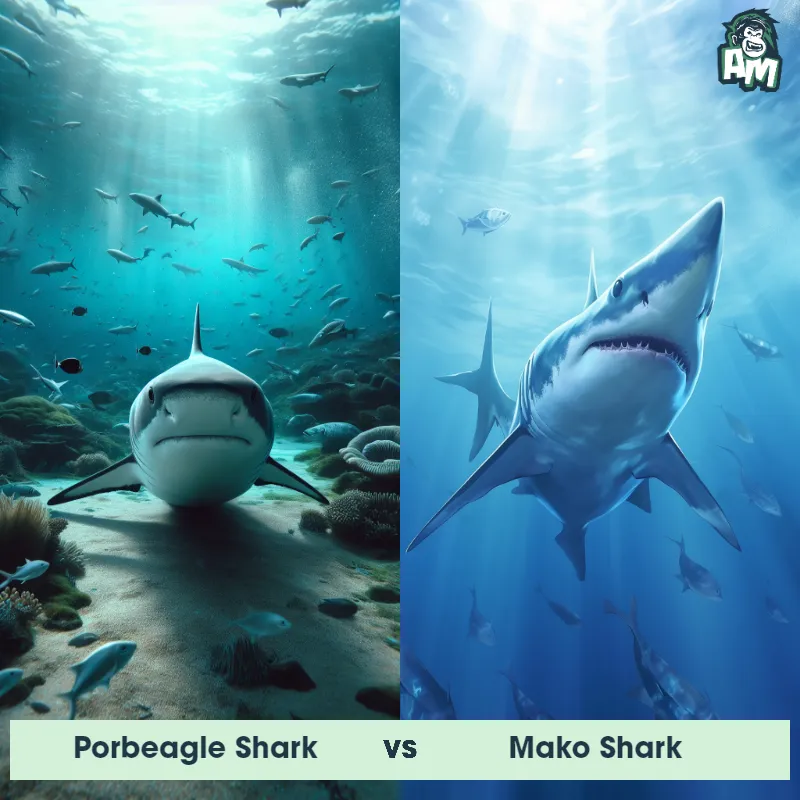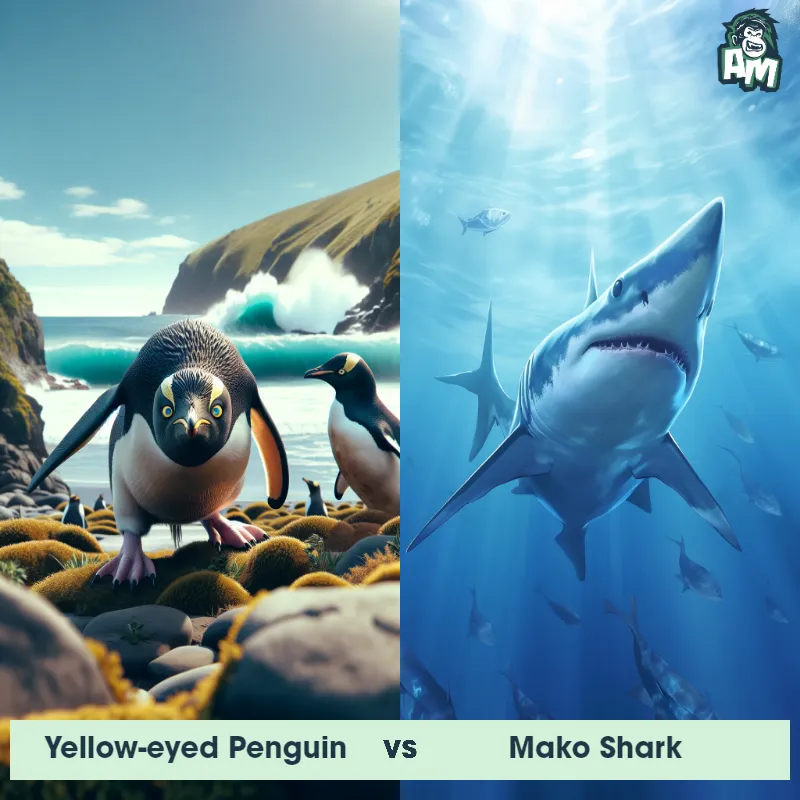The Mako Shark
The Mako Shark, also known as the Isurus oxyrinchus, is a species of large, highly migratory shark found in oceans around the world. It is known for its sleek and streamlined body, which is perfectly adapted for high-speed swimming. Mako Sharks have a metallic blue coloration on their dorsal side and a white belly, allowing them to blend in with the ocean environment. They possess a powerful jaw with sharp, serrated teeth, enabling them to feed on a variety of prey, such as fish and squid. Mako Sharks are known for their incredible speed, capable of reaching speeds of up to 45 mph 72 km/h, making them one of the fastest fish in the ocean.
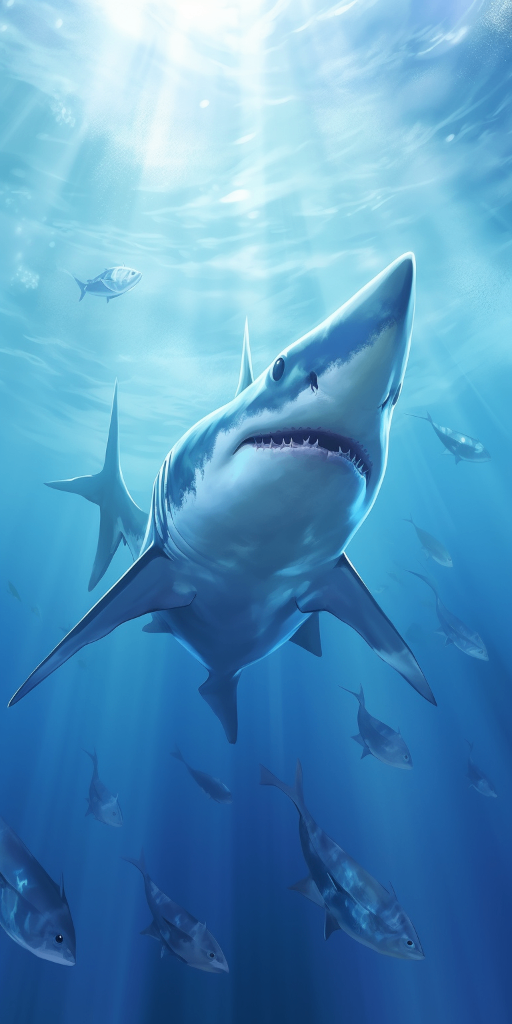
| Mako Shark | |
|---|---|
| Size | Up to 12 feet (3.7 meters) |
| Weight | Over 1,000 pounds (454 kilograms) |
| Speed | Speed: 60 mph (96.56 km/hr) |
| Key Strength | Speed and agility |
| Biggest Weakness | Vulnerable to exhaustion |
| Scientific Name | Isurus oxyrinchus |
| Family | Lamnidae |
| Habitat | Open ocean |
| Geography | Found in temperate and tropical waters worldwide |
| Diet | Other sharks, tuna, sea turtles, and other large fish |
| Lifespan | 20 years - 30 years |

The Mako Shark
The Mako Shark, also known as the Isurus oxyrinchus, is a species of large, highly migratory shark found in oceans around the world. It is known for its sleek and streamlined body, which is perfectly adapted for high-speed swimming. Mako Sharks have a metallic blue coloration on their dorsal side and a white belly, allowing them to blend in with the ocean environment. They possess a powerful jaw with sharp, serrated teeth, enabling them to feed on a variety of prey, such as fish and squid. Mako Sharks are known for their incredible speed, capable of reaching speeds of up to 45 mph 72 km/h, making them one of the fastest fish in the ocean.
Fun Fact: Mako Sharks possess an extraordinary ability to leap out of the water, breaching the surface, and performing acrobatic spins and twists in mid-air, often reaching impressive heights.
| Mako Shark | |
|---|---|
| Size | Up to 12 feet (3.7 meters) |
| Weight | Over 1,000 pounds (454 kilograms) |
| Speed | Speed: 60 mph (96.56 km/hr) |
| Key Strength | Speed and agility |
| Biggest Weakness | Vulnerable to exhaustion |
| Scientific Name | Isurus oxyrinchus |
| Family | Lamnidae |
| Habitat | Open ocean |
| Geography | Found in temperate and tropical waters worldwide |
| Diet | Other sharks, tuna, sea turtles, and other large fish |
| Lifespan | 20 years - 30 years |
Match Highlights
Mako Shark Matchups
We use AI to simulate matchups between the Mako Shark and other animals. Our simulation considers size, strength, and natural predatory behaviors to determine the most likely outcome.

Can't find the Matchup you want?
Create Your Own MatchupMako Shark: Diet, Predators, Aggression, and Defensive Behaviors
What do Mako Sharks eat?
Mako Sharks are carnivorous predators that primarily feed on small schooling fish like mackerel, tuna, and bonito. They are known to be opportunistic feeders and will also consume squid, octopus, and even small sharks.
Do Mako Sharks have any predators?
While Mako Sharks are apex predators in their marine ecosystem, they can still fall prey to larger sharks such as great white sharks and orcas. However, due to their speed and agility, Mako Sharks are usually able to evade most predators.
Are Mako Sharks aggressive?
Mako Sharks are known for their aggressive and bold behavior, especially when feeding or when provoked by an outside stimulus. They are capable of swimming at high speeds and using their sharp teeth to defend themselves or attack their prey.
Do Mako Sharks engage in fights?
Mako Sharks are solitary creatures and do not typically engage in fights with other sharks unless it is during mating season or disputes over food. When provoked, they can become aggressive and engage in fierce battles to establish dominance.
How do Mako Sharks defend themselves?
Mako Sharks use their speed, agility, and sharp teeth to defend themselves against potential threats. They are capable of swimming at speeds up to 60 mph and can quickly evade predators or dangerous situations.
What is the biggest weakness of Mako Sharks in a fight?
Despite their speed and agility, the biggest weakness of Mako Sharks in a fight is their relatively small size compared to other large predatory sharks. This makes them vulnerable to being overpowered or outmaneuvered by larger predators during confrontations.
Fun Fact: Mako Sharks have a remarkable hunting technique where they will sometimes swim vertically underneath their prey, propelling themselves upwards to launch surprise attacks, catching their prey off guard.
Fun Fact: The Mako Shark has a heat-conserving circulatory system that allows it to maintain a higher body temperature than the surrounding water, giving it an advantage in colder waters and increasing its agility and swimming speed.



